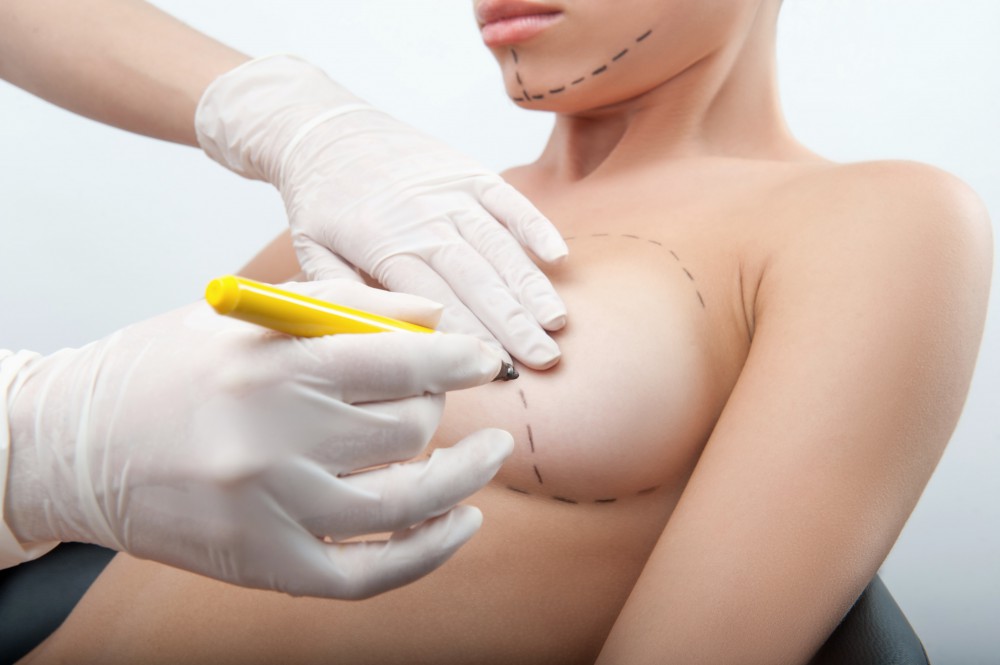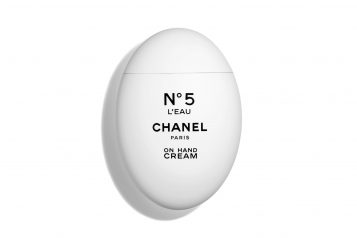
Dr. Charles Galanis is a double board certified plastic surgeon focusing on non-invasive skin treatments, cosmetic breast and body enhancements, and reconstructive surgery for breast and skin cancer. With a strong belief in establishing a trusting and honest relationship with his patients, he strives to create a tailored plan to deliver expected results. Dr. Galanis sat down Haute Beauty to discuss the multiple options for breast implants, and the effects of pregnancy after a breast procedure.
What amount of scarring should a client expect with a breast augmentation?
For a standard breast augmentation – meaning no breast lift is required – the incision should only be 3-4 cm with modern day techniques. When it heals, it should essentially look like a scratch if it is visible at all.
What types of incisions are common for a breast augmentation procedure?
The two most common incisions are under the breast and around the margin of the areola (from the 3 o’clock to 9 o’clock position). An armpit incision is a lesser employed option. For saline implants, some surgeons may offer the belly button as an approach although this does carry greater risk and necessitates use of the less popular saline implant instead of the generally preferred silicone implant.
What are the main risks associated with breast augmentations?
Bleeding and infection are possible complications of any surgery but in the case of breast augmentation should occur <1% of the time. Capsular contracture – which is where firm scar tissue forms around the implant leading to a breast that is hard to the touch – occurs in 5-15% of cases by 10 years. Implant rupture has similar rates although the incidence varies widely by manufacturer. It should be noted that there is no known health risk in the case of implant rupture. Permanent changes in sensitivity are very rare in breast augmentation surgery.
What are some of the options for breast implants?
Implants come in saline versus silicone. Newer generations of silicone implants comes with different gel thickness which gives the implant slightly different properties in terms of feel, incidence of rippling, etc. Implants can be either round or shaped. They also come in a variety of volumes as well as dimensions (i.e. some are wider and shorter whereas others may have a greater degree of projection). All of these variables can all seem a little overwhelming but your plastic surgeon should help their patient navigate the process in selecting the most appropriate implant. I like to tell patients that although it may seem like too many options, in the end the patients benefit as it allows the surgeon to truly customize the result based on the patients’ specific goals and anatomy.
Is there a difference between Saline and Silicone implants?
Both implants have a silicone polymer shell. It’s what is inside that shell that is different. Silicone implants contain a silicone gel whereas saline implants contain saline which is essentially salt water. Silicone implants in general feel more natural and have a decreased incidence of visible rippling. Saline implants tend to feel less natural with higher incidence of rippling but are slightly less expensive.
Is there any upkeep associated with breast augmentation?
Although any device that is man-made should not be expected to last forever, breast implants do not come with an expiration date. On average, around 30% of women will have a revision surgery by 10 years. As a general rule, however I tell patients that if they’re happy with the look and the feel, no matter how long it has been, they can leave them be!
Will pregnancy affect the breasts after a breast lift?
During pregnancy the breast glands swell significantly as milk production begins. The skin and support structures are stretched. The residual effects on the breast AFTER pregnancy vary considerably from patient to patient and are difficult to predict. For some women, the breast volume will return close to pre-pregnancy size and the skin will contract back down such that they maintain their relative structure very well. Others will experience a significant loss of volume and may be left with skin that is stretched out with a lower-hanging breast. Any aesthetic breast surgery should not be considered until at least 3-6 months after a patient has finished nursing.
Is it possible to breast-feed with breast implants?
Breast implants should not affect a woman’s ability to produce or deliver milk.
Can a fat transfer breast augmentation lift breast?
There is some controversy over the efficacy of fat transfer for breast augmentation. It has long been used in reconstructive breast surgery to help address specific breast contours although not as a primary means of reconstruction. Lately it has been explored as a way to augment the breast in lieu of implants. There are limitations. Because a portion of transferred fat will be resorbed, large volume transfers may yield highly unpredictable results and may leave patients with greater asymmetry. Large volume of transferred fat may also lead to a more nodular and less natural feel to the breast than compared to a silicone implant for example. Finally, although most radiologists can confidently tell the difference between a fat nodule and a precancerous lesion, it is not unreasonable to expect transferred fat to falsely impersonate a precancerous lesion on mammography screening, which would lead to unnecessary workup or even biopsy surgery down the road. All that said, for patients who want a very subtle enhancement (eg. at or less than a cup size), fat grafting can be an excellent alternative to implants. When it comes to breast lift surgery, however, fat grafting is not currently a reliable method to restore the breasts to a perkier position.
For more information, visit Dr. Brian A. Levine's social media:

























